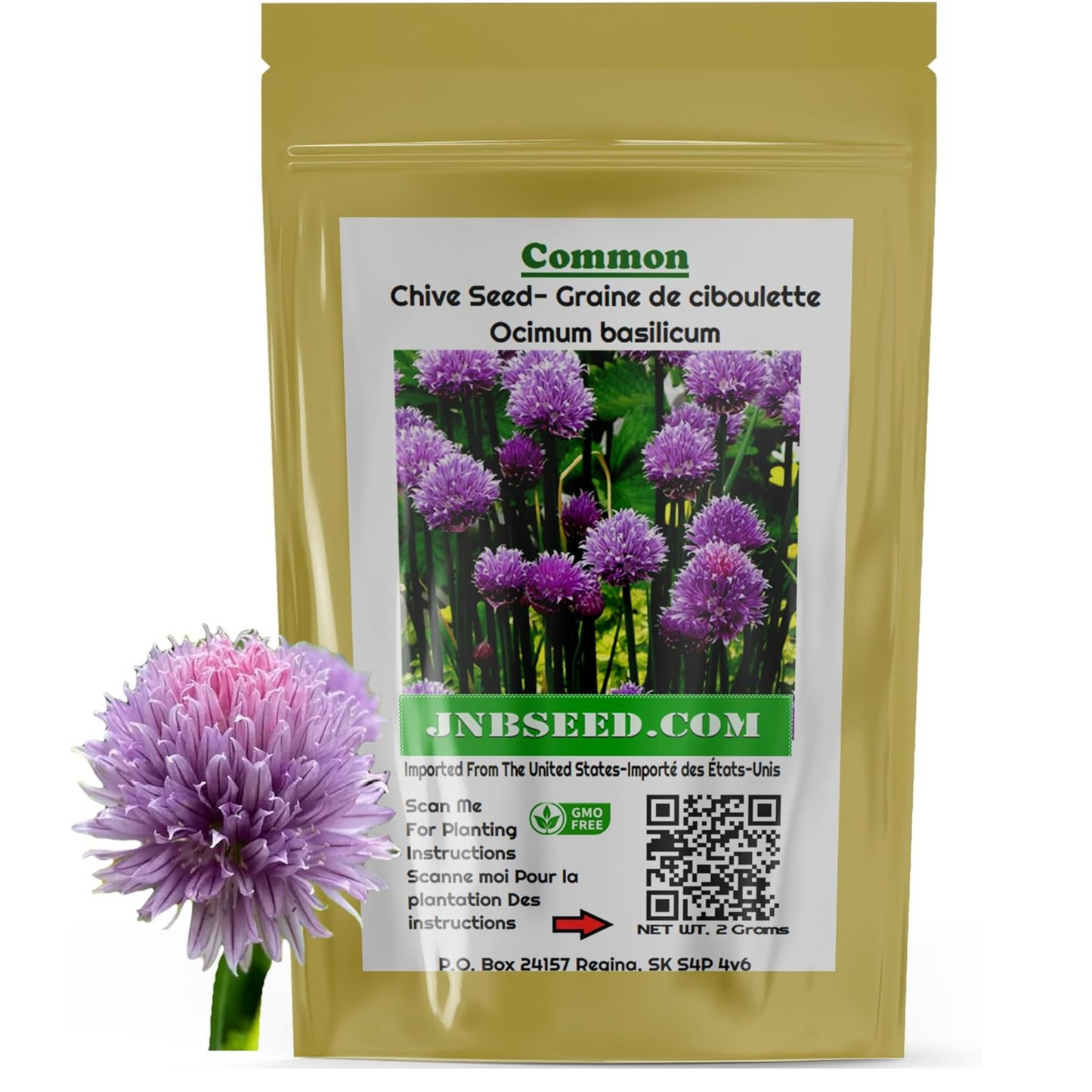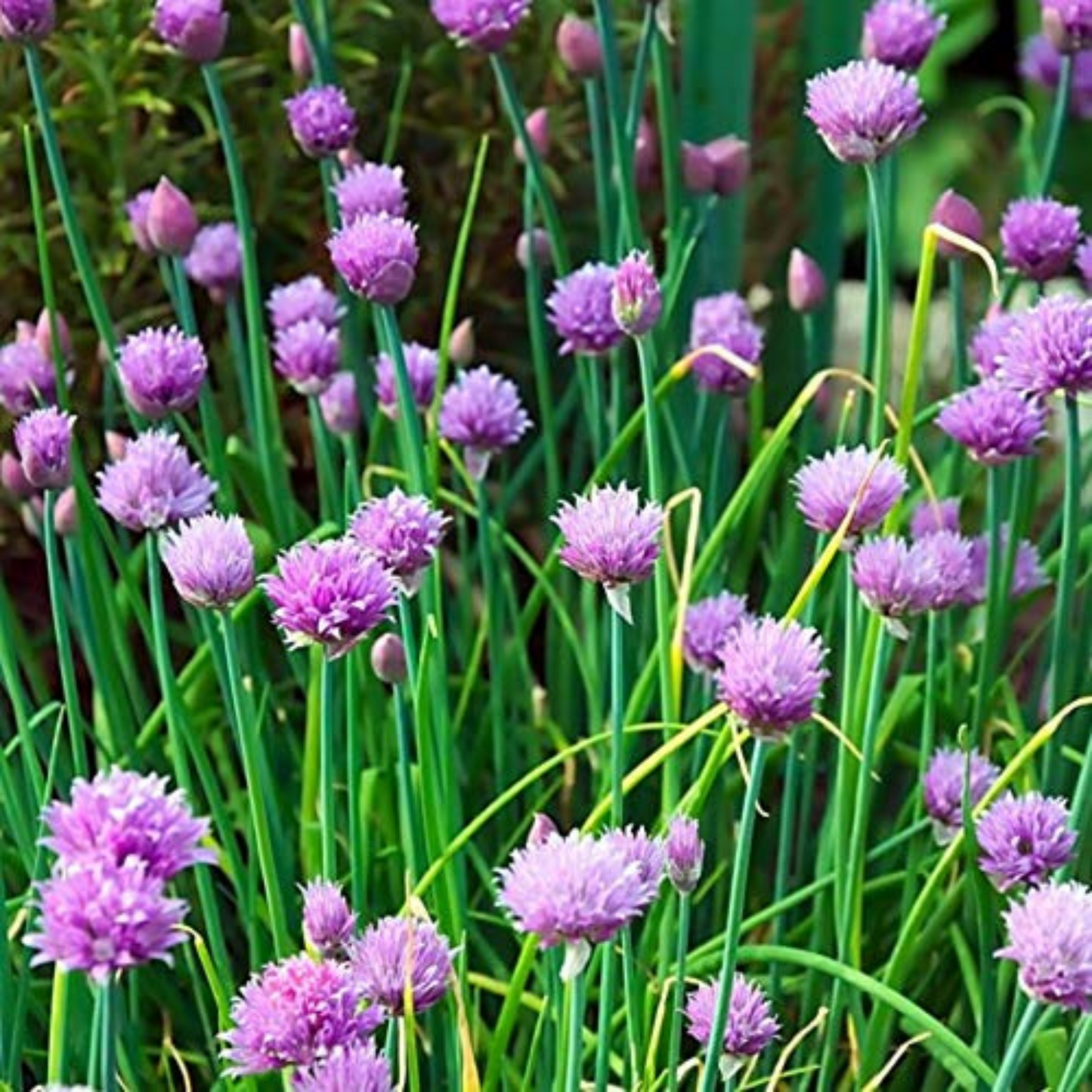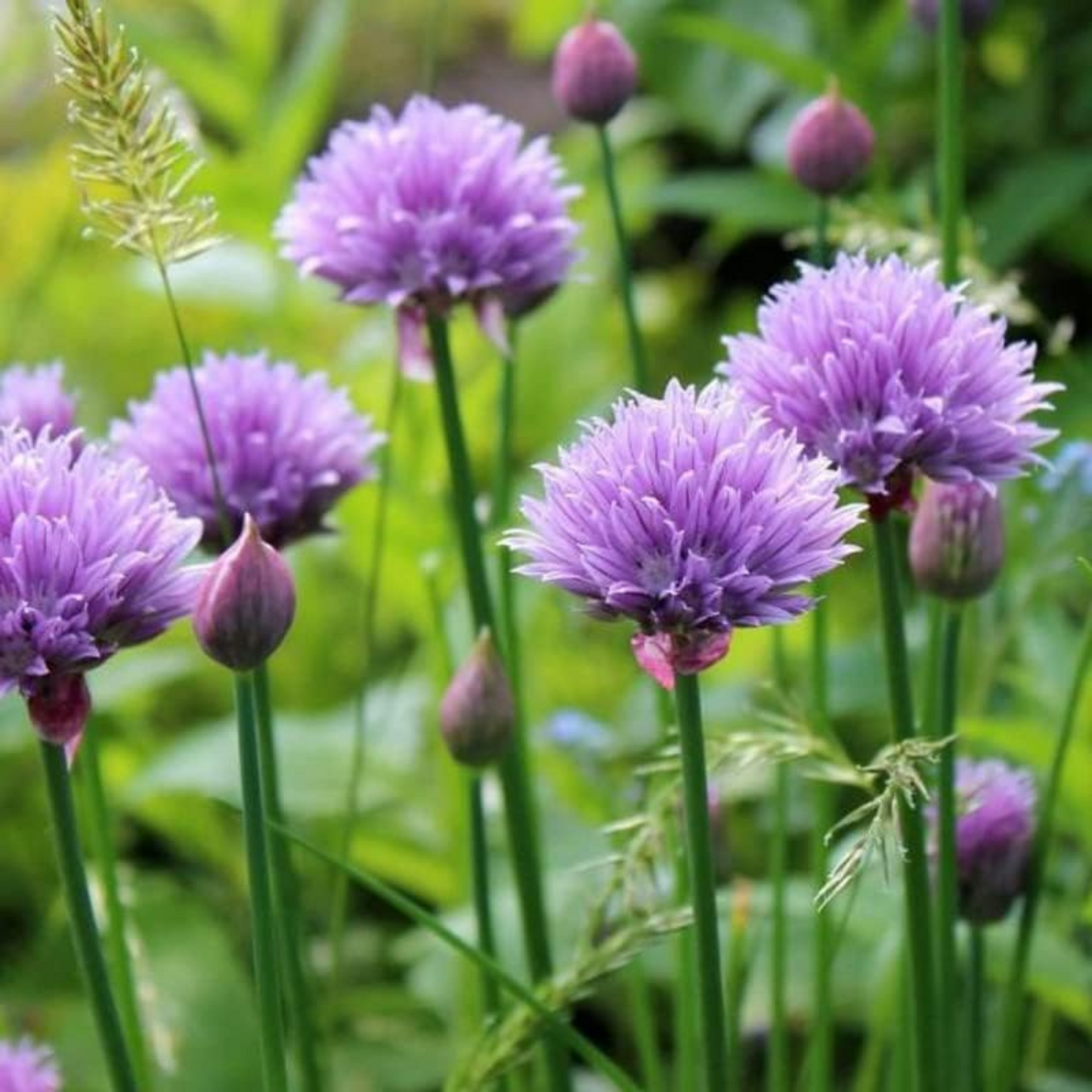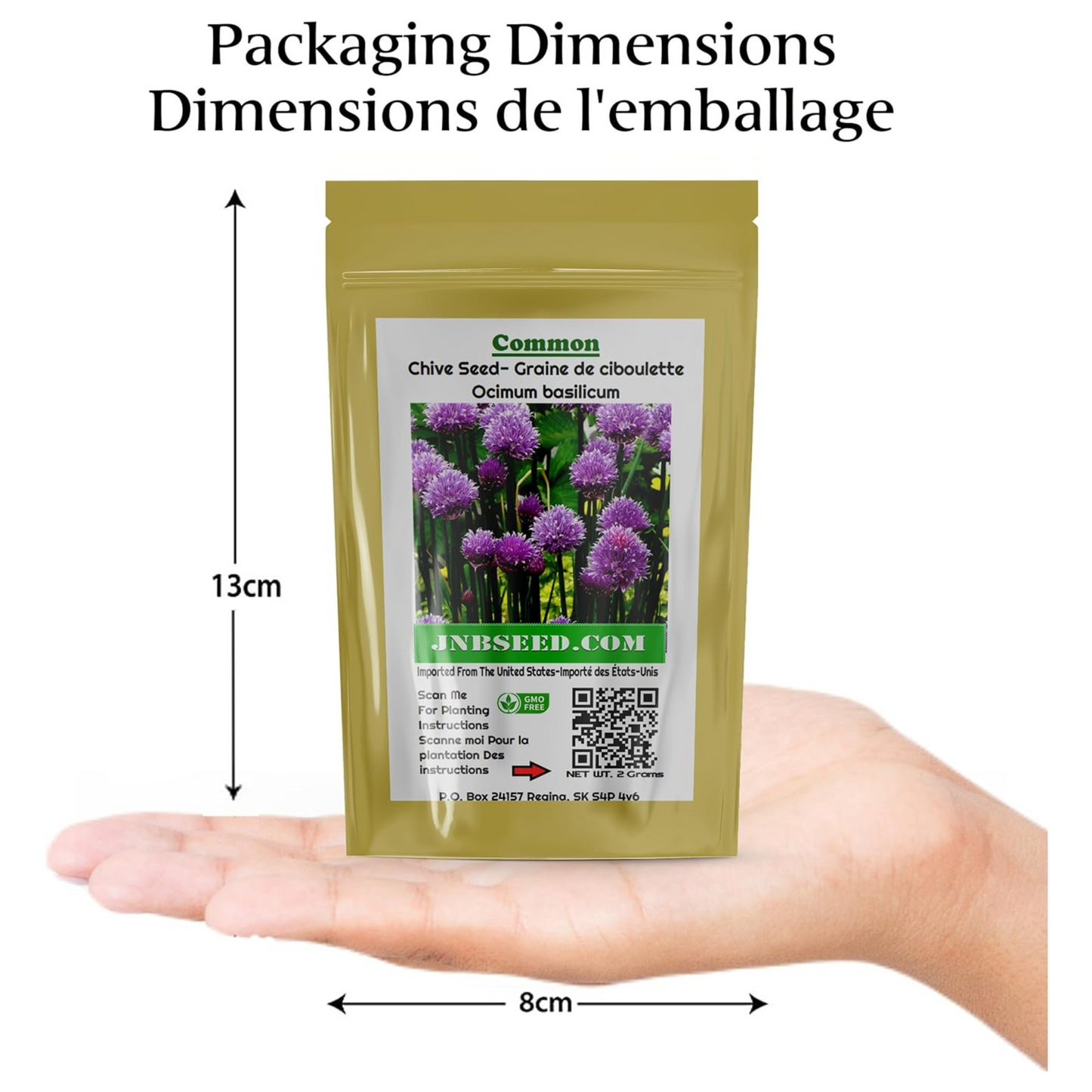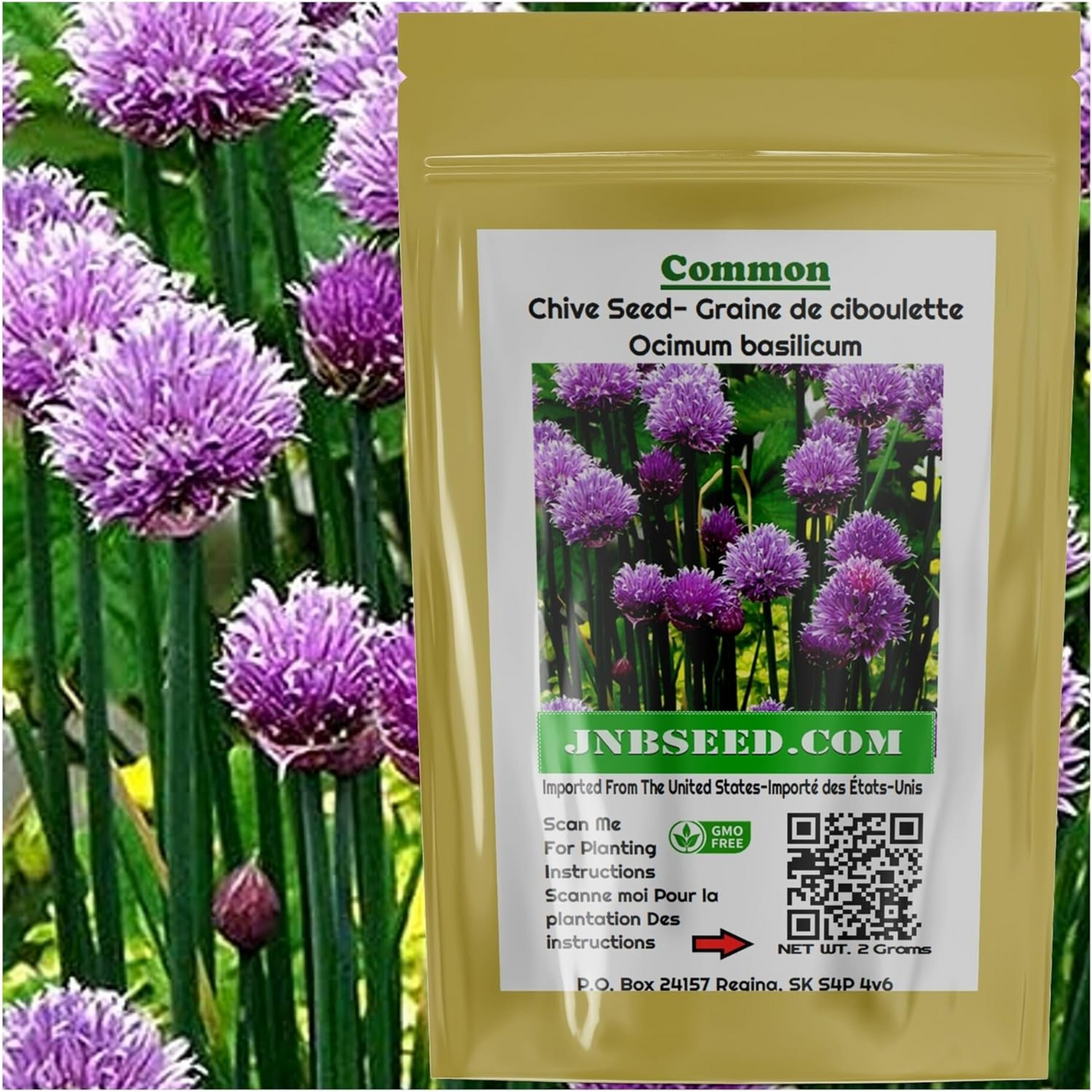JNB Seed
Common Chive Seeds
Common Chive Seeds
Couldn't load pickup availability
Share
How To Grow
How To Grow
Sowing: Common chive seeds can be sown directly into well-drained soil in early spring or early fall. Plant the seeds 0.6 centimeters deep and space them 15-20 centimeters apart. Keep the soil consistently moist until germination, which usually takes 7-14 days. For indoor sowing, use pots or trays filled with potting soil, and place them in a location with plenty of sunlight.
Growing: Provide common chive plants with full sunlight or partial shade. Keep the soil consistently moist but not waterlogged. Chives are relatively low-maintenance and do not require much fertilizer. Harvest the leaves as needed by snipping them with scissors, leaving about 5 centimeters above the soil to encourage regrowth. Chives will continue to produce fresh leaves throughout the growing season.
Harvesting
Harvesting
Harvesting: When the chive flowers have dried and turned brown, carefully snip off the flower heads. Place the harvested flower heads in a paper bag and shake gently to release the seeds. Store the collected seeds in a cool, dry place for future planting or sharing with other gardeners.
Seed Saving
Seed Saving
Seed Saving: Allow the chive flowers to fully mature and dry on the plant. Once the flower heads have turned brown and dry, carefully collect them. Place the dried flower heads in a paper bag and gently crush them to release the seeds. Separate the seeds from the chaff and store them in a cool, dry place for future planting or sharing.
Extra Facts
Extra Facts
Planting Methods: Direct sow seeds into well-drained soil or start indoors in pots or trays.
Blooming Season: Late spring to early summer.
Planting Season: Early spring or early fall.
Latin Name/USDA Zones: Allium schoenoprasum, USDA Zones 3-9.
Sunlight Required/ Height: Full sun to partial shade; grows up to 30 centimeters tall.
Shelf Life After Test Date: Approximately 2-3 years.
Seed Type: Open pollinated.
Soil Type: Loam soil is preferred, but chives can tolerate various soil types including clay and sandy soil.
